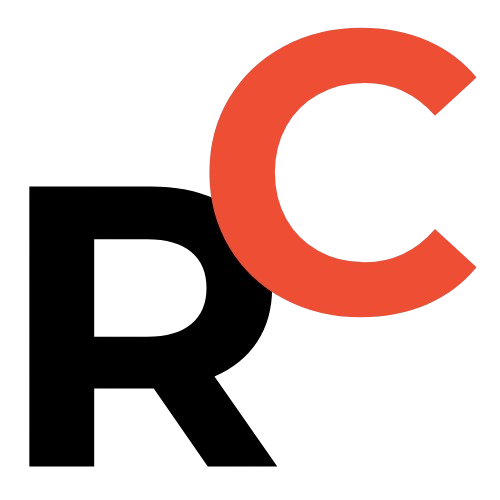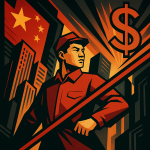Key Points
- Overall, China’s industrial profits dipped 1.1% year-on-year for January-May 2025, totaling ¥2,720.43 billion RMB, despite an increase in operating revenue.
- Private enterprises and foreign-invested firms outperformed state giants, with private enterprise profits surging by 3.4% while state-controlled enterprises saw profits fall 7.4%.
- Manufacturing profits climbed a healthy 5.4%, contrasting sharply with a 29.0% plummet in the mining sector. High-tech sectors like Computer, Communication, and Other Electronic Equipment saw significant growth (+11.9%).
- Government policies like the “Two Renewals” initiative are boosting specific sectors, with smart consumer equipment profits up an eye-popping 101.5%.
- A key challenge is the extended collection period for accounts receivable, which stretched to 70.5 days, indicating companies are waiting longer to receive payments.

The latest data on China’s industrial profits reveals a complex and diverging picture of the nation’s economic engine for the first five months of 2025.
According to the National Bureau of Statistics (NBS), profits for major industrial firms dipped slightly, but a closer look shows a fascinating story of high-tech manufacturing booming while old-guard industries face serious headwinds.
Let’s break down the numbers and see who’s winning and who’s getting squeezed.
The Big Picture: Key Financials at a Glance
From January to May, the headline numbers for industrial enterprises above the designated size (those with annual revenue over ¥20 million RMB) paint a mixed scene.
- Total Profits: ¥2,720.43 billion RMB ($374.96 billion USD), a decrease of 1.1% year-on-year.
- Operating Revenue: ¥54.76 trillion RMB ($7.55 trillion USD), an increase of 2.7%.
- Operating Costs: ¥46.88 trillion RMB ($6.46 trillion USD), up 3.0%.
- Operating Revenue Profit Margin: Came in at 4.97%, a slight drop of 0.19 percentage points.
The key takeaway? While companies are bringing in more revenue overall, their profitability is getting tighter.

Resume Captain
Your AI Career Toolkit:
- AI Resume Optimization
- Custom Cover Letters
- LinkedIn Profile Boost
- Interview Question Prep
- Salary Negotiation Agent

Ownership Showdown: Private & Foreign Firms Outperform State Giants
Not all companies are feeling the same pressure.
When you slice the data by ownership, a clear trend emerges: private and foreign-invested firms are showing remarkable resilience.
- Private Enterprises: Profits surged by 3.4%, hitting ¥759.25 billion RMB ($104.66 billion USD).
- Foreign-invested & HMT Enterprises: Edged up by 0.3%, reaching ¥685.68 billion RMB ($94.50 billion USD).
- Share-holding Enterprises: Saw profits dip by 1.5% to ¥2,017.07 billion RMB ($277.94 billion USD).
- State-controlled Enterprises: Experienced the largest drop, with profits falling 7.4% to ¥870.95 billion RMB ($120.02 billion USD).

Sector Breakdown: Manufacturing Shines Bright, Mining Slumps
The story gets even clearer when we look at the core industrial sectors.
Manufacturing is clearly the star performer, propping up the overall numbers.
- Manufacturing: Profits climbed a healthy 5.4% to reach ¥2,020.14 billion RMB ($278.43 billion USD).
- Electricity, Heat, Gas, & Water: This sector also saw growth, with profits up 3.7% to ¥342.25 billion RMB ($47.19 billion USD).
- Mining: Faced a massive downturn, with profits plummeting by 29.0% to ¥358.04 billion RMB ($49.34 billion USD).

Find Top Talent on China's Leading Networks
- Post Across China's Job Sites from $299 / role, or
- Hire Our Recruiting Pros from $799 / role
- Qualified Candidate Bundles
- Lower Hiring Costs by 80%+
- Expert Team Since 2014
Your First Job Post

Industry Deep Dive: The Hottest and Coldest Sectors
Drilling down into specific industries reveals some wild swings.
High-tech, advanced manufacturing, and specialized equipment are booming, while traditional heavy industries are struggling.
The Winners: Industries on the Rise
- Agricultural and Sideline Food Processing: +38.2%
- Computer, Communication, and Other Electronic Equipment: +11.9%
- Electrical Machinery and Equipment: +11.6%
- General Equipment Manufacturing: +10.6%
- Non-ferrous Metal Smelting: +9.8%
- Special Equipment Manufacturing: +7.1%
- Electricity and Heat Production: +5.7%
- Big turnaround story: The ferrous metal smelting and rolling processing industries flipped from losses last year to profits this year.
The Laggards: Industries Feeling the Squeeze
- Coal Mining and Washing: -50.6%
- Automobile Manufacturing: -11.9%
- Petroleum and Natural Gas Extraction: -10.4%
- Chemical Raw Materials and Products: -4.7%
- Textile Industry: -1.8%
- The petroleum, coal, and other fuel processing industries saw their losses deepen compared to last year.

ExpatInvest China
Grow Your RMB in China:
- Invest Your RMB Locally
- Buy & Sell Online in CN¥
- No Lock-In Periods
- English Service & Data
- Start with Only ¥1,000

The Official Take: What’s Driving These Numbers?
The National Bureau of Statistics provided some valuable context behind the data, highlighting several key drivers.
Equipment Manufacturing: The Economy’s “Ballast Stone”
Even with a slight overall dip, equipment manufacturing has been a powerful stabilizing force.
Profits in this crucial sector grew by 7.2%, contributing 2.4 percentage points to the overall industrial profit growth.
Notably, seven out of the eight major equipment manufacturing sectors saw profits rise, with electronics, electrical machinery, and general equipment all posting double-digit growth.
“Reaching for the Sky & Seas”: Aerospace and Marine Boom
China’s push into high-end transport is paying off big time.
Profits in the railway, shipbuilding, and aerospace industries collectively soared an incredible 56.0%.
This was fueled by:
- Aircraft manufacturing: Profits up 120.7%.
- Shipbuilding: Profits up 85.0%.
- Spacecraft & Launch Vehicles: Profits up 28.6%.
Policy in Action: The “Two Renewals” Pay Off
Government initiatives to spur large-scale equipment upgrades and consumer goods trade-ins are showing clear results.
The “Two Renewals” policy has directly boosted profits in:
- General Equipment: +10.6%
- Special Equipment: +7.1%
- Smart Consumer Equipment: An eye-popping +101.5%
- Household Appliances: Profits up between 20-30%.

Under the Hood: A Corporate Health Check
A look at corporate balance sheets offers more clues about the operational landscape.
- Total Assets: ¥182.36 trillion RMB ($25.14 trillion USD), grew 5.1% YoY.
- Asset-Liability Ratio: 57.7% (slight increase, indicating stable yet creeping debt).
- Accounts Receivable: ¥26.40 trillion RMB ($3.64 trillion USD), jumped 9.0% YoY.
- Accounts Receivable Collection Period: 70.5 days (increased by 4.1 days YoY, indicating slower payments).
- Inventory Turnover Period: 20.8 days (held steady YoY).
- Total Assets: Grew 5.1% to ¥182.36 trillion RMB ($25.14 trillion USD).
- Asset-Liability Ratio: Ticked up slightly to 57.7%, meaning debt levels are stable but creeping up.
- Accounts Receivable: Jumped 9.0% to ¥26.40 trillion RMB ($3.64 trillion USD).
- ⚠️ Collection Period: This is a key metric to watch. The average time to get paid stretched to 70.5 days, an increase of 4.1 days from last year. Companies are waiting longer for their cash.
- Inventory Turnover: Held steady at 20.8 days.
While companies are managing inventory well, the increase in receivables suggests potential cash flow pressure for some.

What’s Next for China’s Industrial Sector?
The May-only data showed a steeper profit drop of 9.1%, indicating some short-term headwinds from demand and pricing pressure.
However, the overall picture from January to May is one of transition.
High-tech, policy-driven sectors are thriving and driving growth, showcasing the vitality of China’s push for high-quality development.
Meanwhile, traditional industries are undergoing a painful but necessary adjustment.
Policymakers have signaled they will implement more proactive measures to support the economy, focusing on innovation and strengthening domestic demand.
The coming months will be critical in determining the trajectory of China’s industrial profits for the rest of the year.

![China Signals Major Investment Push: Vice Premier He Lifeng Meets ADIA Chairman, Eyeing Deeper Economic Ties & New China Investment Opportunities [FreshFromChina]](https://freshfromchina.com/wp-content/uploads/2025/05/china-signals-major-investment-push-vice-premier-he-lifeng-meets-adia-chairman.png____FreshFromChina-150x150.png)




